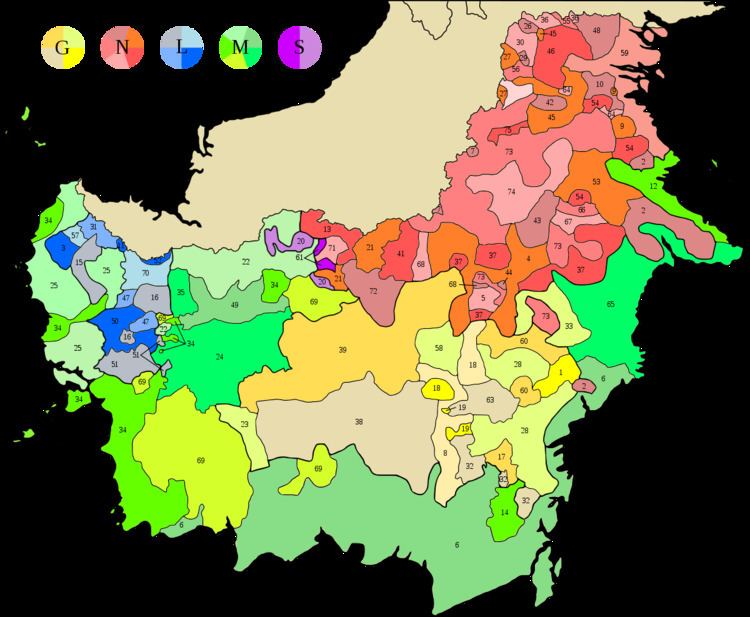ISO 639-3 kzi | Native speakers 5,000 (2000–2011) Glottolog kela1258 | |
 | ||
Language family AustronesianMalayo-PolynesianNorth BorneanNorth SarawakanApo DuatKelabit | ||
Kelabit is one of the remotest languages of Borneo, on the Sarawak–Kalimantan border, and spoken by one of the smallest ethnicities in Borneo, the Kelabit people.
Phonology
Vowels are /ə, a, e, i, o, u/. All consonants but the aspirated voiced stops are lengthened after stressed /ə/. Stress generally occurs on the penultimate syllable.
Kelabit is notable for having "a typologically rare series of true voiced aspirates" (that is, not breathy voice/murmured consonants; for some speakers they are prevoiced) along with modally voiced and tenuis consonants but without an accompanying series of voiceless aspirates. It is the only language known to have voiced aspirates or murmured consonants without also having voiceless aspirated consonants, a situation that has been reconstructed for Proto-Indo-European. (See glottalic theory.)
At the end of a word, /t/ is pronounced [θ]. For some speakers, /d͇͡t͇ʰ/ is affricated; in neighboring Lun Dayeh, the reflex of this consonant is an unaspirated affricate [d͡tʃ]. /dʒ/ is rare, and is not attested from all dialects.
The flap is alveolar. It's not clear if /n/ and the other coronal sonorants are alveolar like /d/ or dental like /t/.
The aspirated voiced series only occurs intervocalicly, and may have arisen from geminate consonants. They are at least impressionistically twice as long as other stops. They vary with /b d͇ ɡ/ under suffixation, with /b͡pʰ d͇͡t͇ʰ ɡ͡kʰ/ occurring where other consonants would be allophonically geminated:
There are several arguments for analyzing the aspirated voiced consonants as segments rather than as consonant clusters:
The aspirated voiced series does not appear in all dialects of Kelabit or Lun Dayeh:
